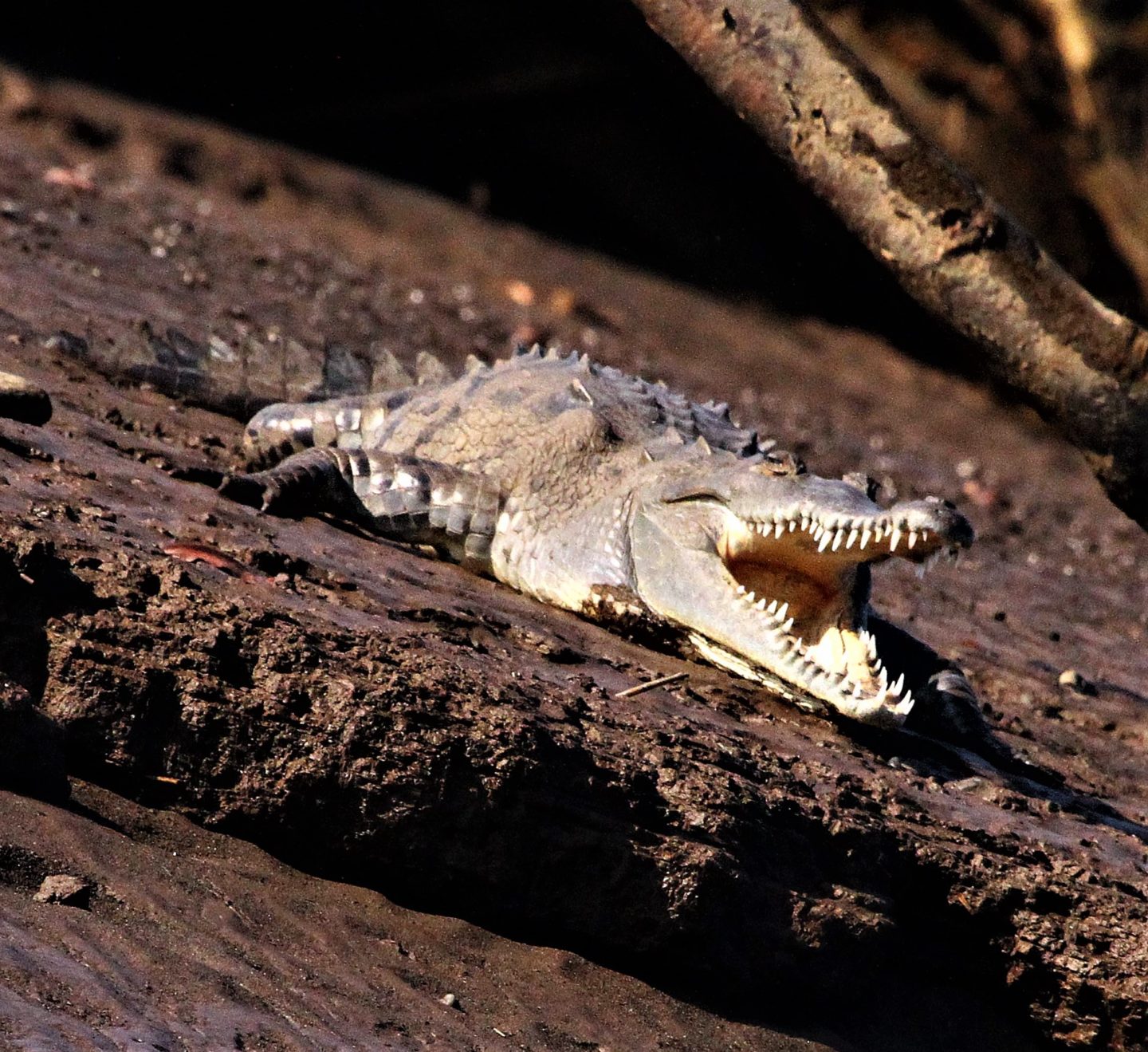
Costa Rica has to be on every wildlife-lover’s bucket list and there’s a reason for that…..it doesn’t disappoint. From the Pacific Ocean to the Caribbean Sea, it’s a diverse landscape of cloud forests, rainforests, volcanoes and beaches with an astonishing array of animals to match. I was there on a birdwatching trip but it was the reptiles that really caught my attention and one in particular….the American Crocodile.
One thing that wildlife watchers are well aware of is that you have to work hard to see what you want to see but finding crocs in Costa Rica is an altogether different experience. Here’s how to guarantee seeing a huge amount of crocs during your visit along with some other classic Costa Rican wildlife.
Head to the Tarcoles River
 At 111km long, the River Tarcoles, which flows into the Gulf of Nicoya in the Pacific Ocean, has the accolade of being the most important river in Costa Rica as 50% of the population live within its watershed. That statistic comes at a price though as it’s also the most polluted. Nearly 70% of the country’s untreated waste enters the river and a large diesel leak in 2000 made further contamination a major threat to the river’s ecology. It’s waters are murky and uninviting which is probably a good thing as it’s obviously dangerous to swim in.
At 111km long, the River Tarcoles, which flows into the Gulf of Nicoya in the Pacific Ocean, has the accolade of being the most important river in Costa Rica as 50% of the population live within its watershed. That statistic comes at a price though as it’s also the most polluted. Nearly 70% of the country’s untreated waste enters the river and a large diesel leak in 2000 made further contamination a major threat to the river’s ecology. It’s waters are murky and uninviting which is probably a good thing as it’s obviously dangerous to swim in.
That’s even before you realise that the river is home to one the highest populations of American Crocodiles in the world. I think that it’s fair to say that no one should ever swim in the river. If the pollution doesn’t get you, the crocs will! And they have…in 2014, a Nicaraguan man went for a swim. I won’t go into the grizzly details here (it’s well reported on the internet) but needless to say a croc didn’t go hungry that day.
Have I sold it to you yet? Having painted a pretty grim picture of the River Tarcoles, it nevertheless remains a must-see whilst in Costa Rica. The crocs are just one of the attractions but the river surprisingly supports a great selection of birds, mammals and reptiles.

Iguana by the Rio Tarcoles
So, how do you see the crocs? Crocs are plentiful in Costa Rica but for a sure-fire, close-up, safe way to see them, first of all, book a boat trip. It’ll only take 2 to 3 hours leaving plenty of time in the day to move on and sample the other goodies that Costa Rica has to offer.
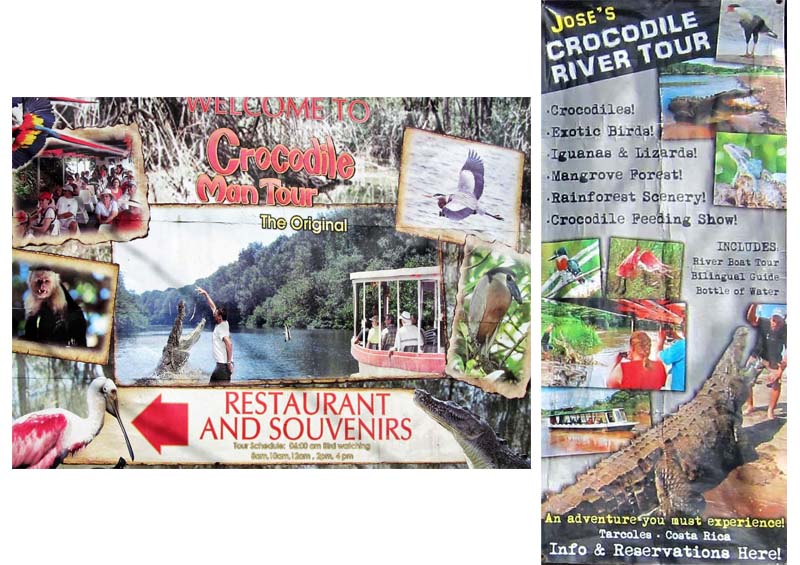 The wildlife is best seen from the river itself and there are several boat tours that will do just that. Some will specialise in birding trips whilst others focus on the crocs. There are some tours that also feed the crocs. The staff get out onto the banks of the river and actually feed them by hand. It’s illegal to feed crocs in Costa Rica however, over the years, the Government has turned a blind eye to the feeding on these tours as it is not seen as detrimental as it is, to some extent, controlled. This view is now changing following concerns that feeding the crocs makes them more aggressive and is changing their behaviour towards humans. The debate of croc control and feeding continues to rage on in the country.
The wildlife is best seen from the river itself and there are several boat tours that will do just that. Some will specialise in birding trips whilst others focus on the crocs. There are some tours that also feed the crocs. The staff get out onto the banks of the river and actually feed them by hand. It’s illegal to feed crocs in Costa Rica however, over the years, the Government has turned a blind eye to the feeding on these tours as it is not seen as detrimental as it is, to some extent, controlled. This view is now changing following concerns that feeding the crocs makes them more aggressive and is changing their behaviour towards humans. The debate of croc control and feeding continues to rage on in the country.
If, like me, you don’t like feeding wild animals as a ‘show’ then choose a tour that doesn’t. Always ask questions when booking to see exactly what the tour includes. I went on a tour with Jose’s Crocodile River Tour…it was pre-booked as part of a wildlife tour from UK travel company Naturetrek. It was predominantly focussed on birds and we had the added bonus of the Naturetrek guide and our local guide who were with us throughout our stay in Cost Rica as well as the boat tour guide. What we didn’t get was the ‘feed the crocs’ show….. the seeing of the crocs was just an added bonus.
The pros and cons for feeding wildlife and the polluted river aside, the river trip is nothing short of tremendous and well worth the price of about $30US. My tour was early in the morning but trips are dependent upon the tides. It’s best to check and book in advance. There are several companies running boat trips from Tarcoles and Puerte Peje. All have websites so check beforehand for the best one to suit you.
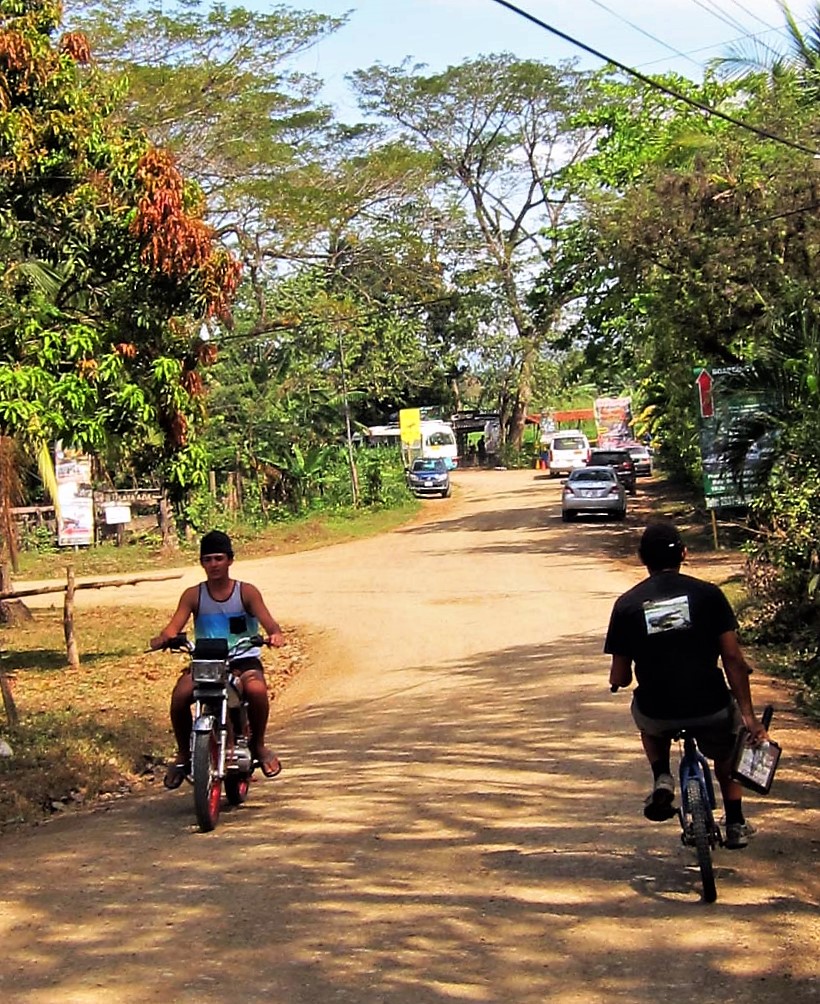
Motor & pedal cyclists on the road towards the crocodile tours
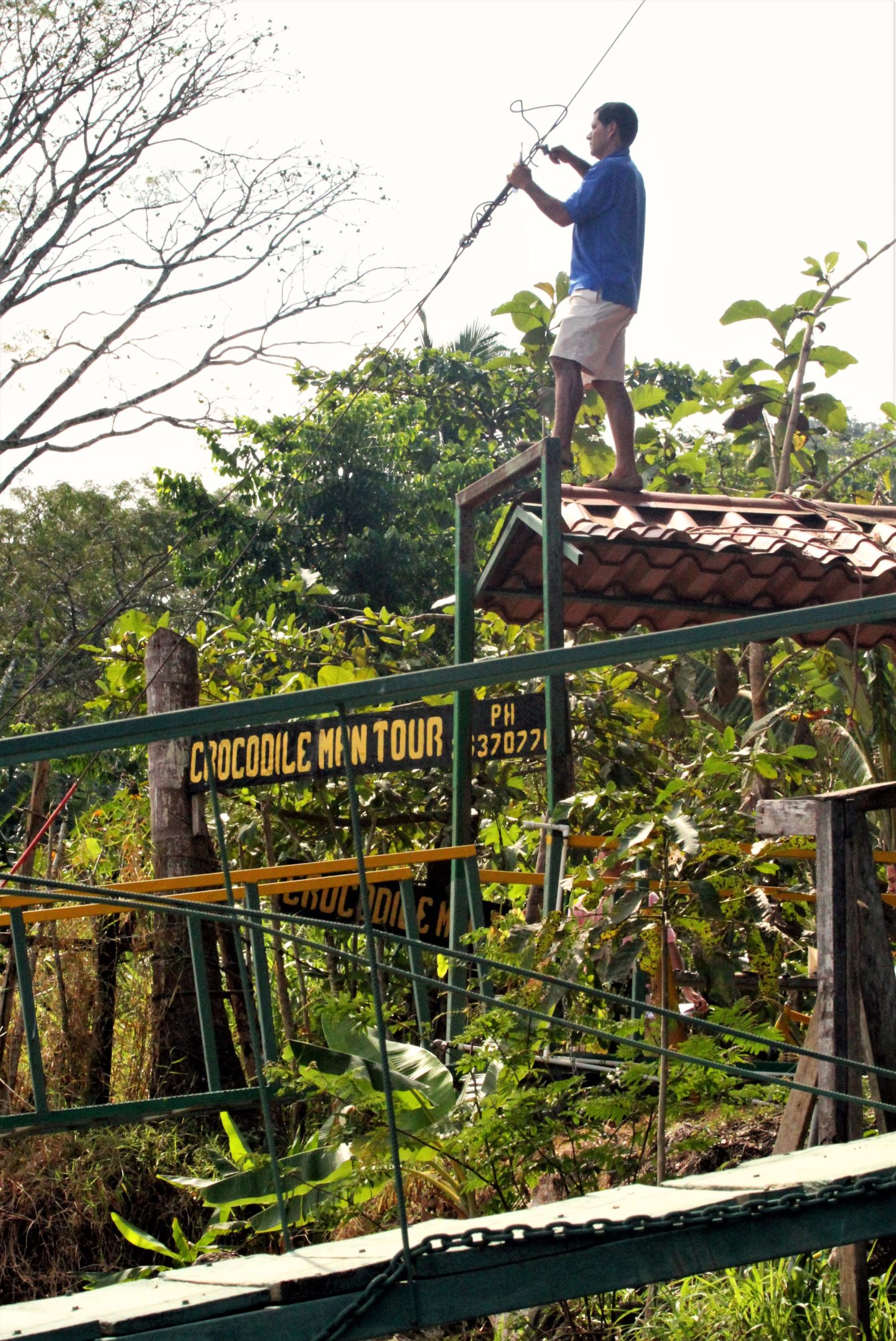
Man above the jetty, Rio Tarcoles crocodile tours

Birdwatching on the Tarcoles
What will you see from the boat?
On my trip, the sun was already up and warm. Thankfully the boats are covered affording some shade and comfort when it gets particularly hot. Being so early, we were the only trip out.

Covered boats are comfortable and spacious
Swallows and Swifts swirled over the boat as we made our way downstream towards the Pacific Ocean. Occasionally one would hitch a ride. We passed Roseate Spoonbills, their salmon pink hues standing out against the mud they were sifting through. That same mud shone silvery white in places as the sun’s glare grew strength and bounced off every surface including the Great and Snowy Egrets which dazzled my eyes even with sunglasses on!
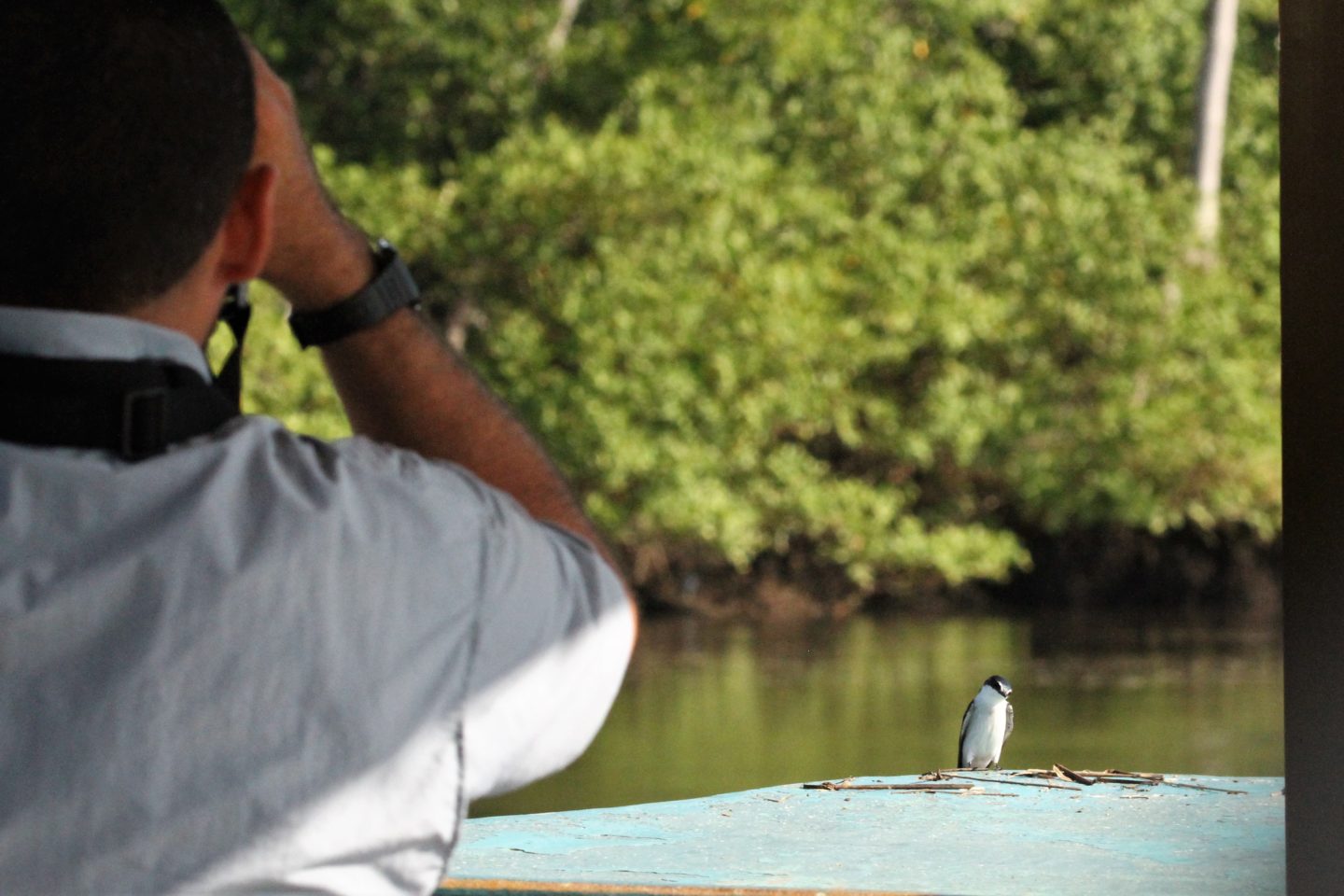
Bird hitching a ride
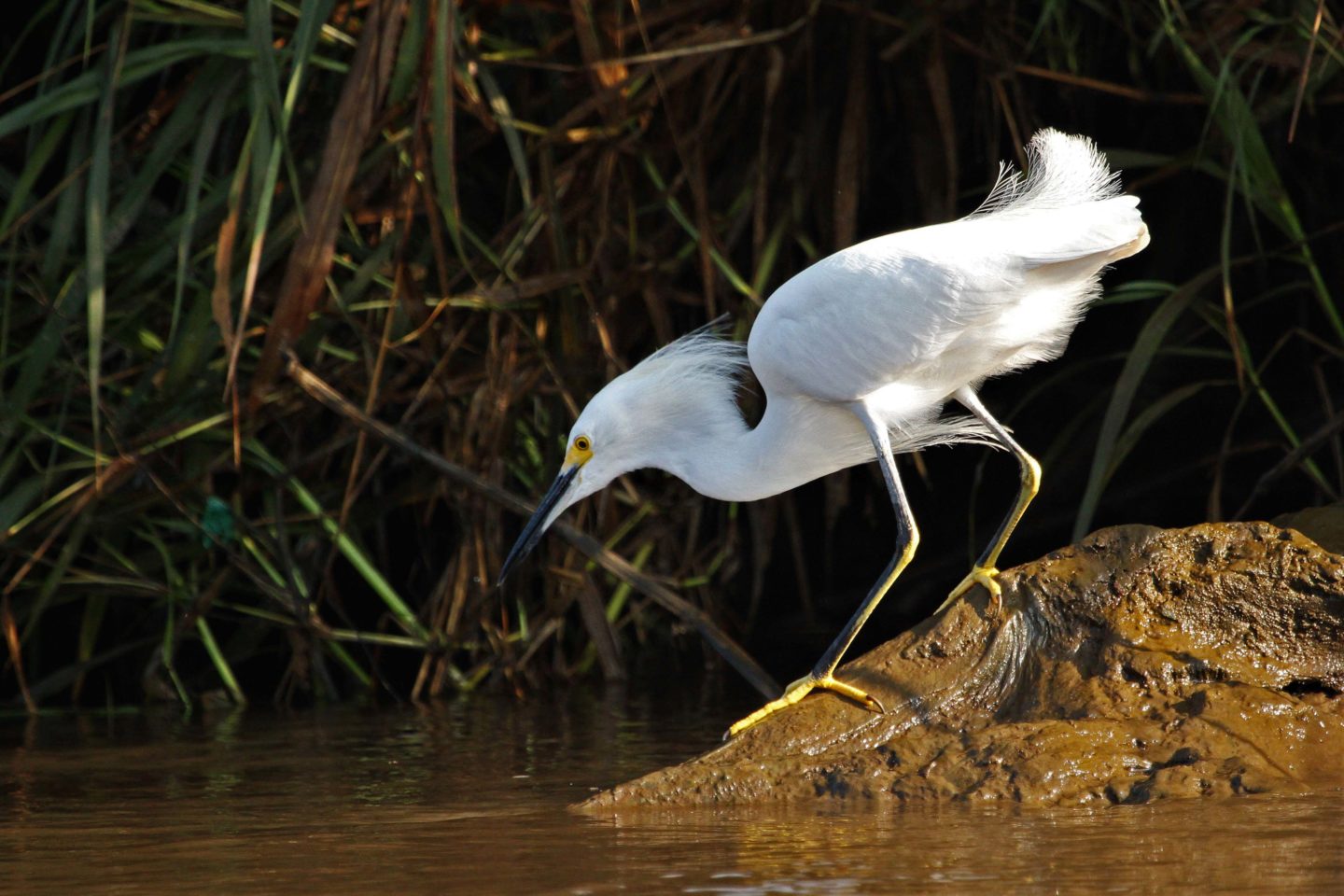
Snowy Egret hunting on the river bank
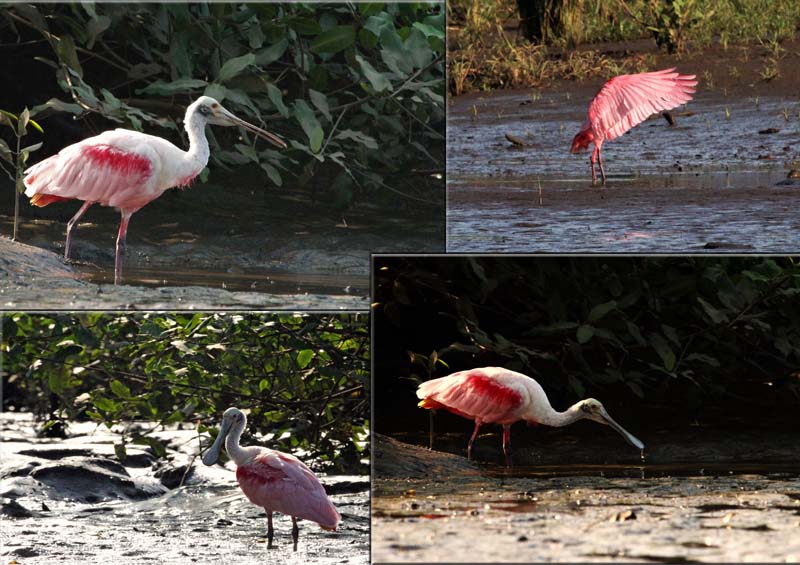
Roseate Spoonbills
Moving further down river into the mangroves
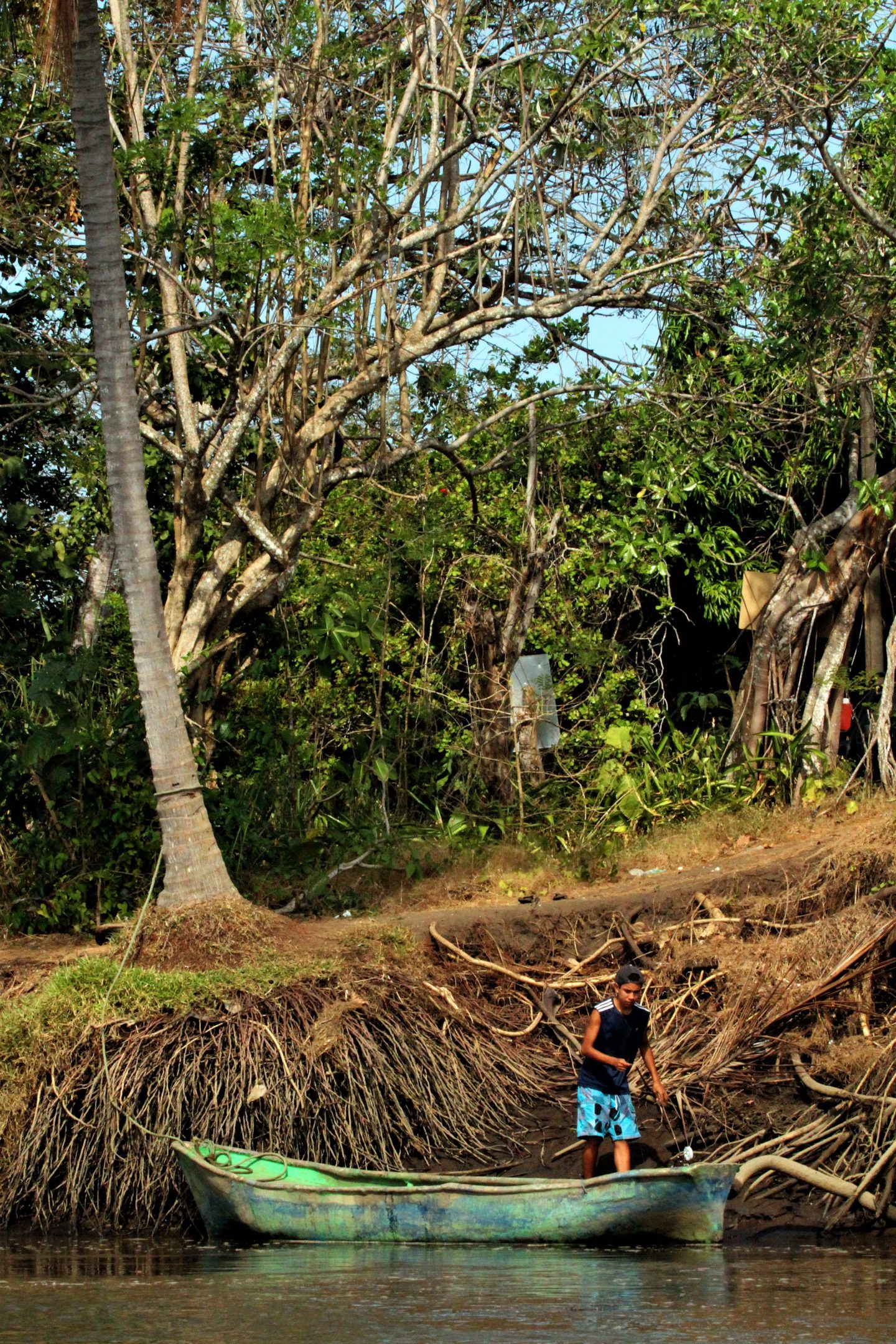
As we drifted along, life went on as usual for the locals living alongside the river. They weren’t the only ones fishing. A variety of herons, like soldiers on guard, stood stock still whilst others crept silently towards their next meal. A Ringed Kingfisher tucked into a fish almost as big as itself whilst a vulture took the opportunity of devouring a dead fish it had found. Up above, a very attentive Mangrove Black-hawk watched from side-lines.
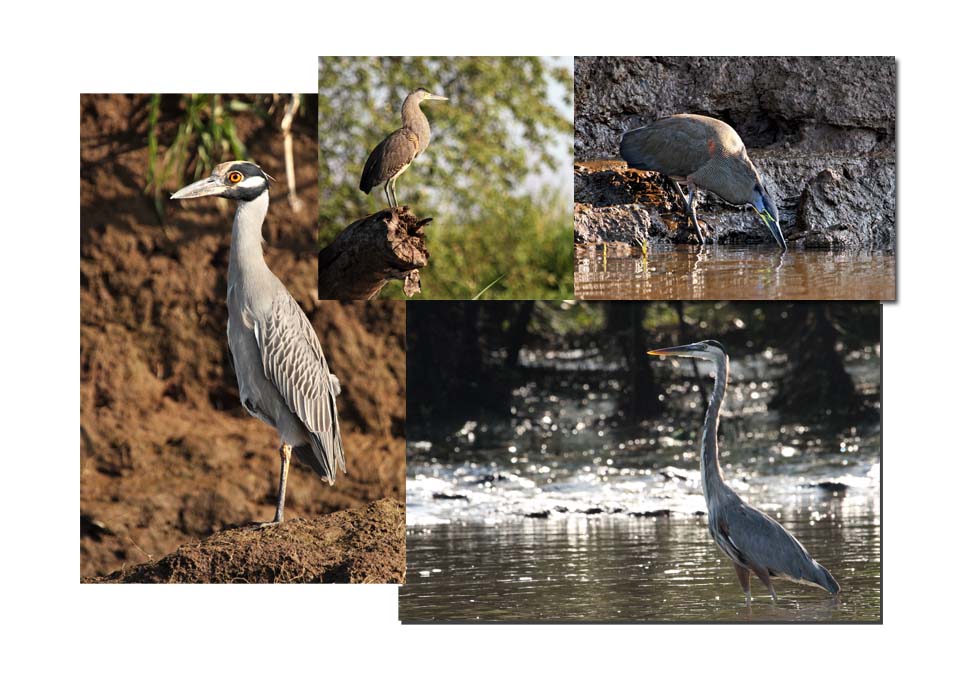
Clockwise from left – Yellow crowned night heron; Bare-throated Tiger Heron on log and hunting; Great Blue Heron

Ringed Kingfisher
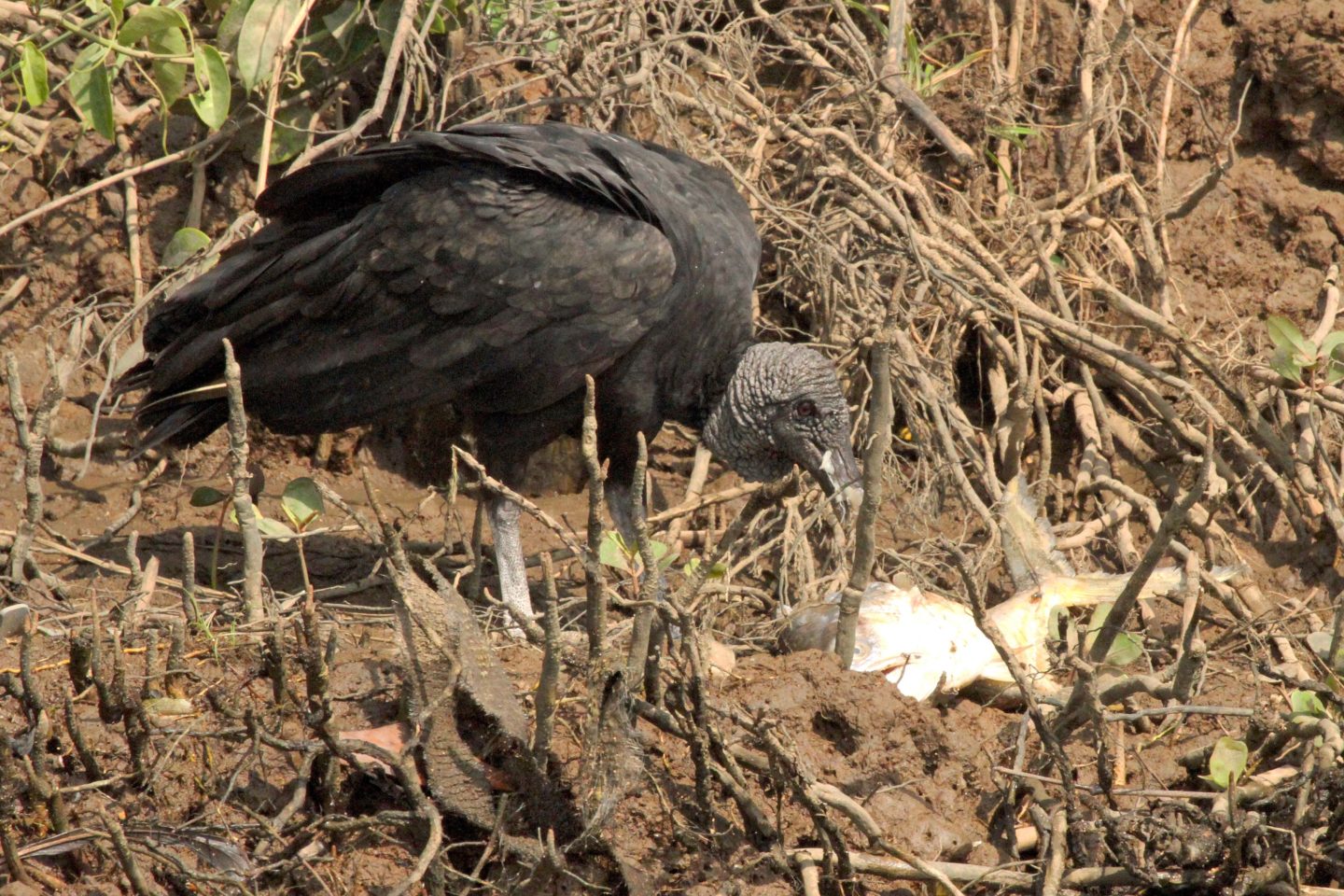
Black Vulture

Mangrove Black-hawk
Out on the breakwater separating us from the Pacific Ocean itself, waders busied themselves. Ospreys used this as a resting place and made occasional fly-bys.
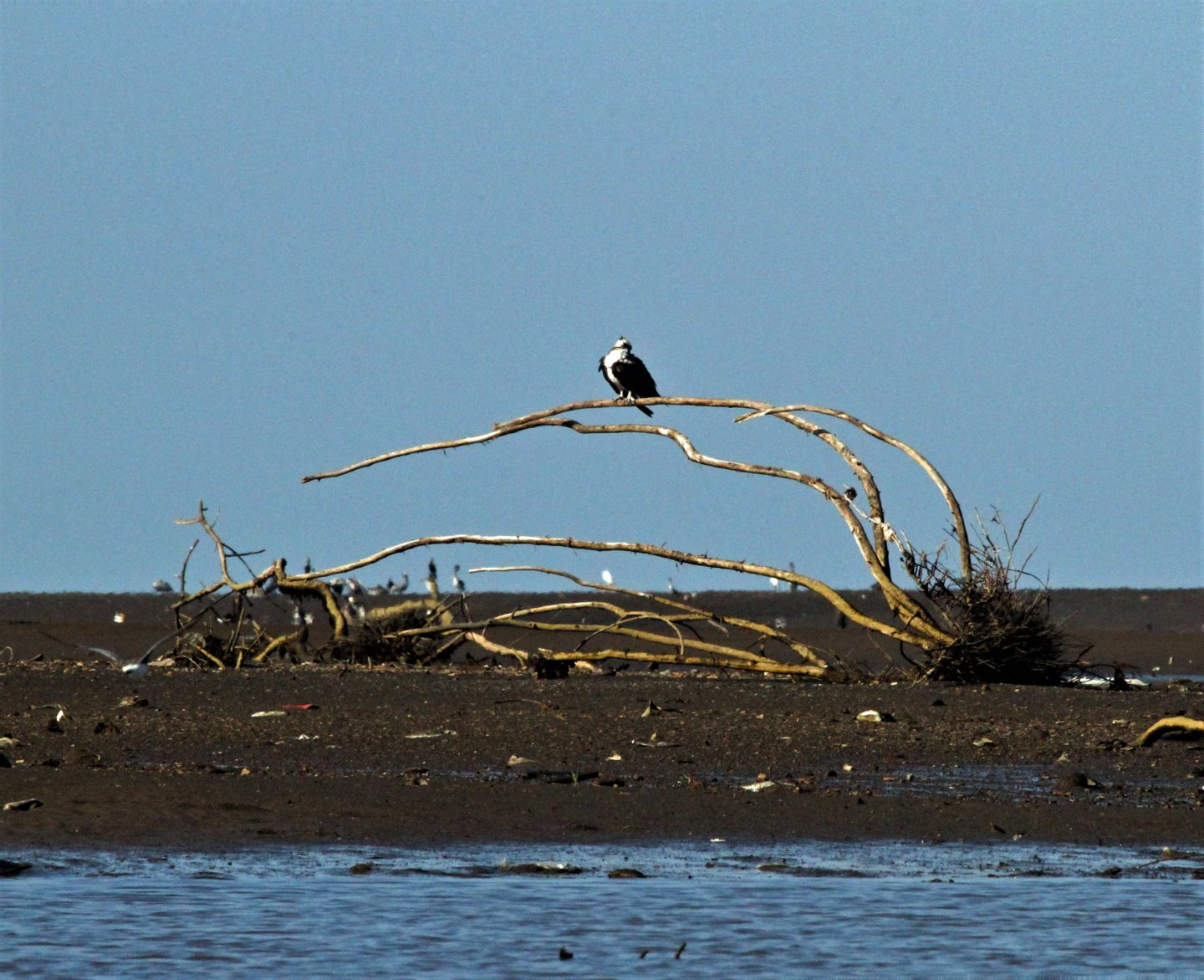
Osprey on the breakwater
After taking a right turn into a branch of the main river, we entered the Estero Guacalillo, a mangrove fringed channel where four species of mangrove tree thrive. Here small orange crabs scuttled over the mangrove roots which arched up, tangling over the surface of the water.
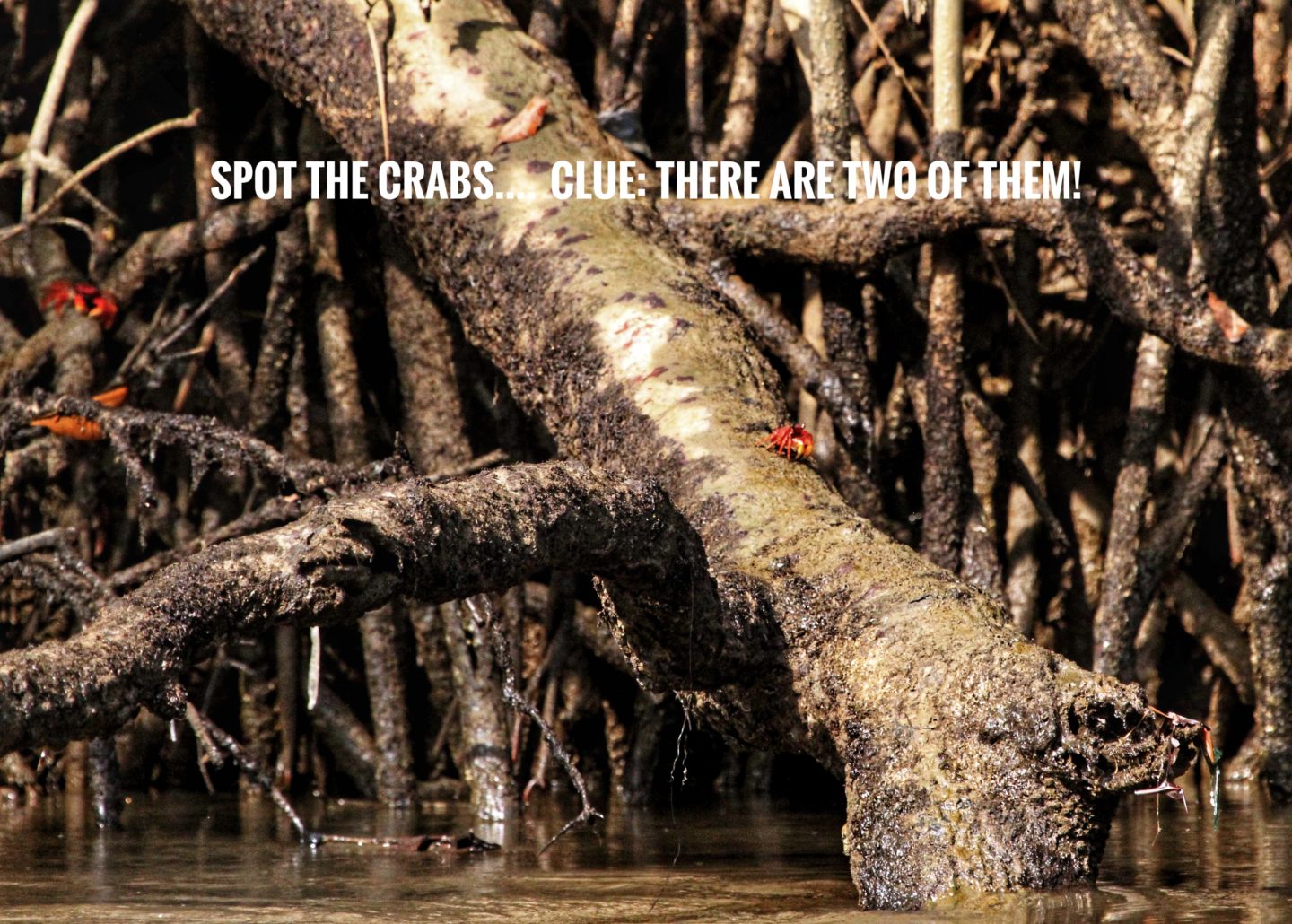
Like a highwayman in hiding, the masked eyes of a Raccoon peered out from behind a tree as the engine was cut and silence prevailed. Prothonotary and Mangrove Warblers warbled alongside us accompanying the slopping sounds of the boat and I would never have seen the Mangrove Cuckoo had someone else not spotted it deep in the trees. That’s where being with a group comes in handy….if you don’t spot something and the guides don’t spot it either then there’s a good chance that another group member will. It can become competitive!
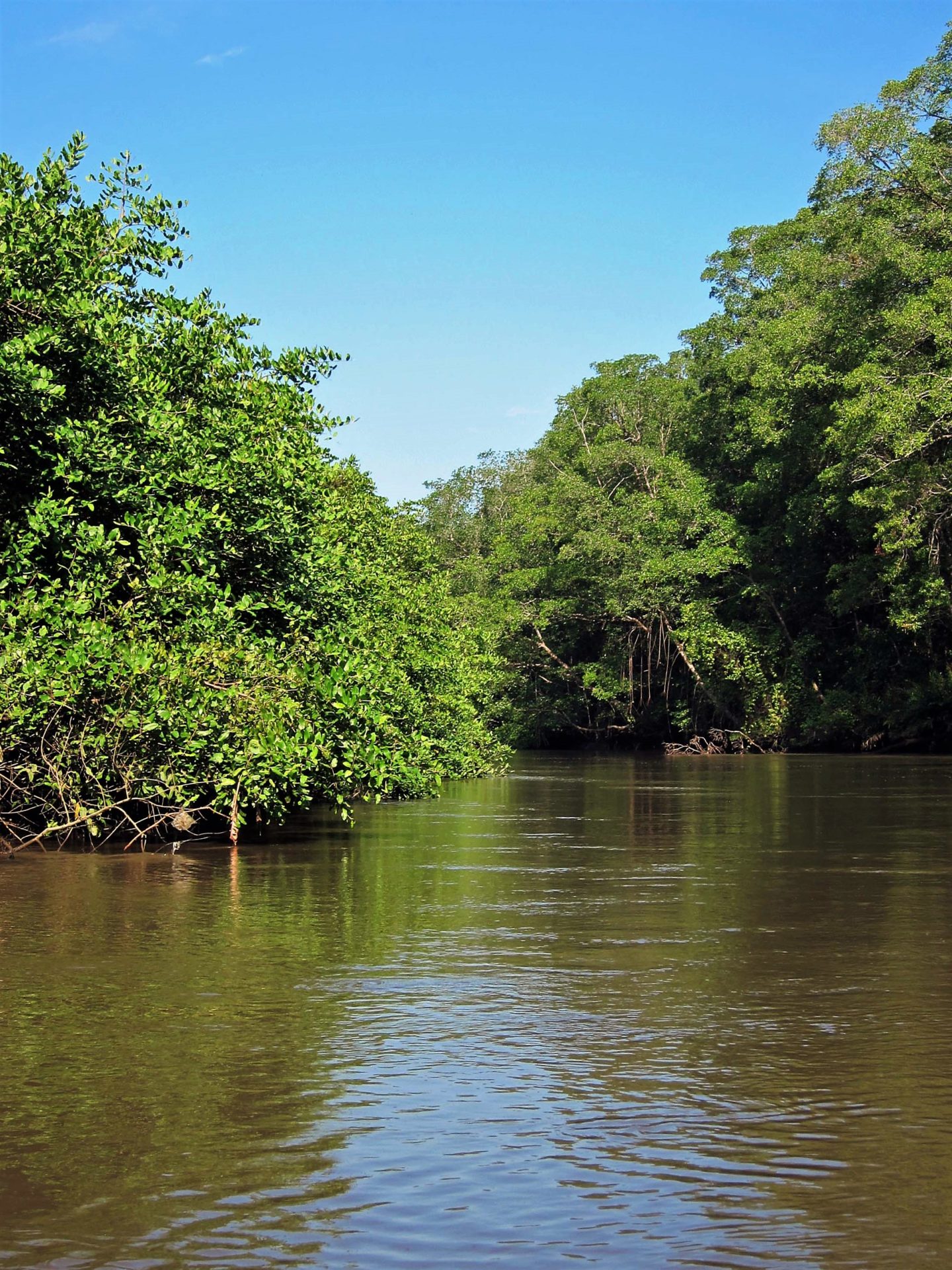
Floating down the Estero Guacalillo
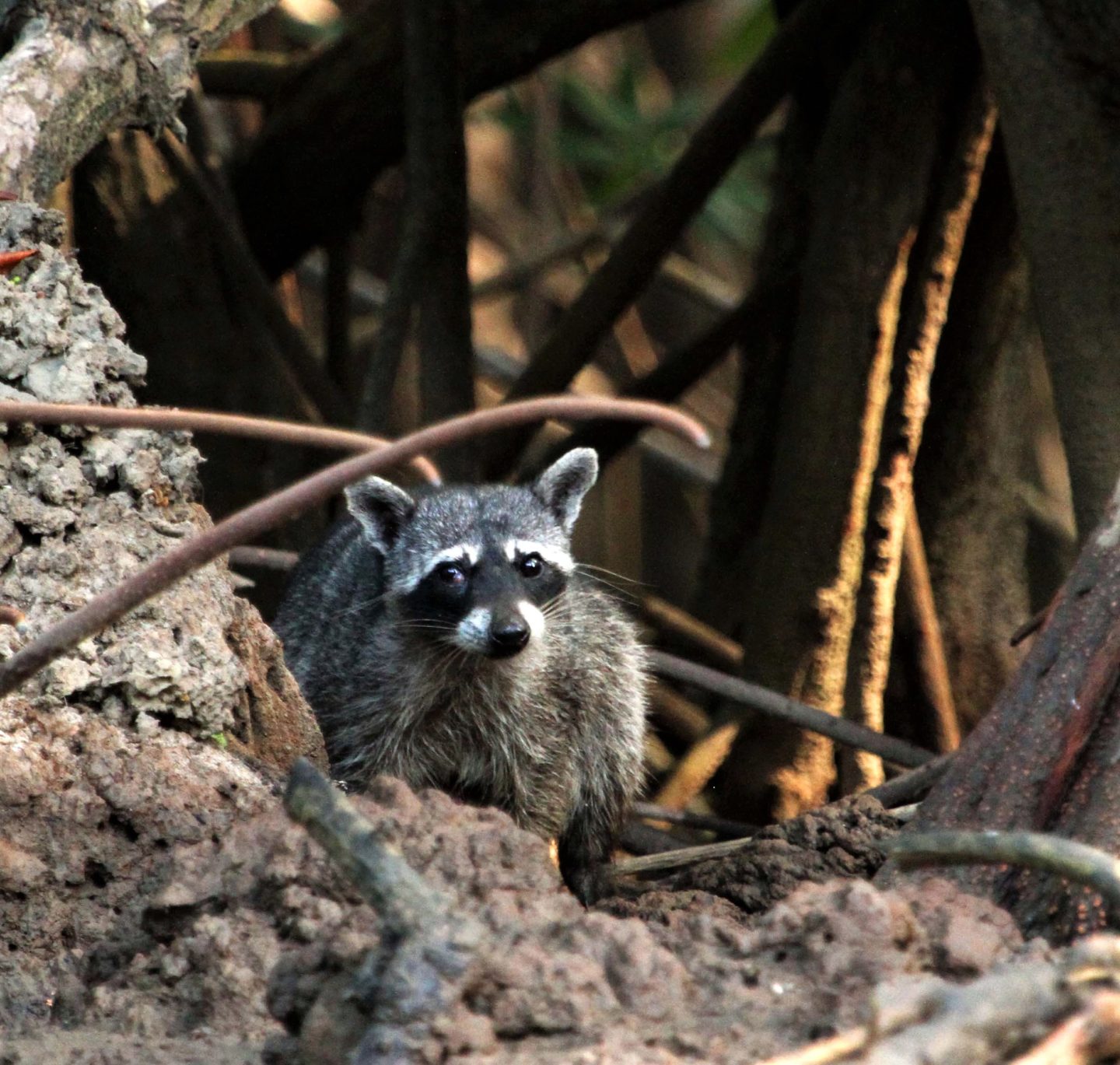
Raccoon
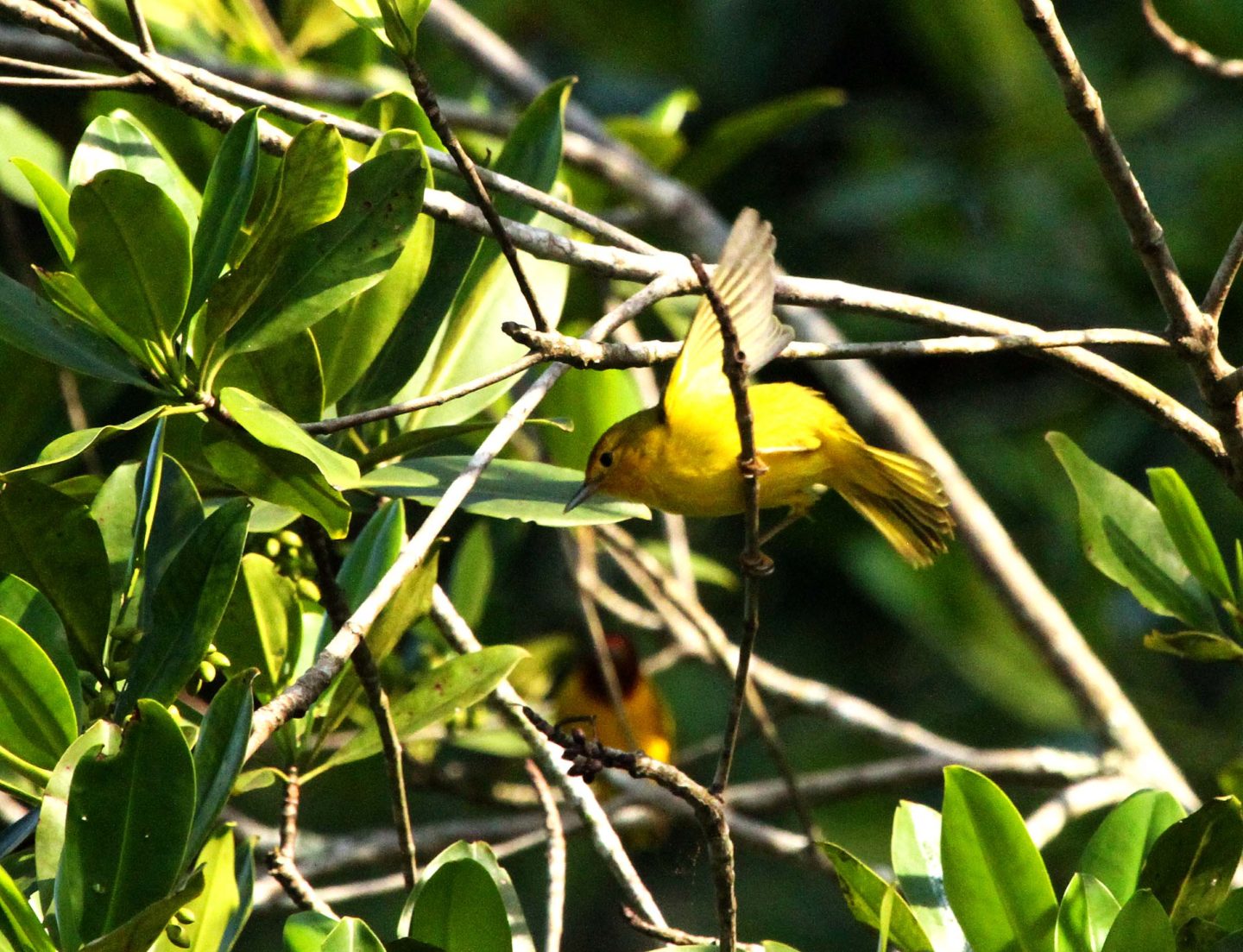
Prothonotary Warbler
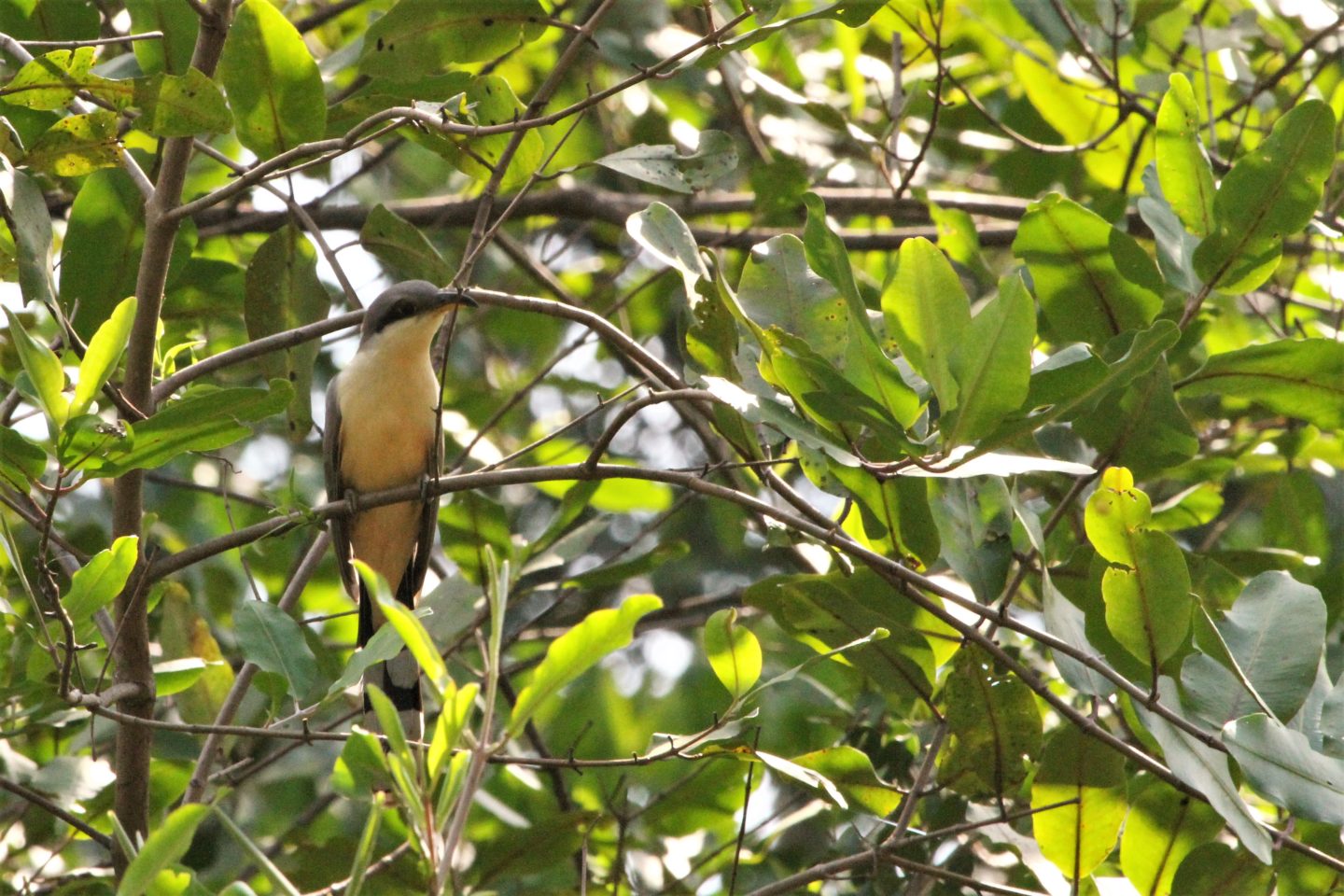
Mangrove Cuckoo
But where are the crocs?!
The one animal that no one needed help to see were, of course, the crocs. Occasionally seen gliding through the water, most were sunning themselves on the mudflats and we drew up very near to them. Huge powerful things they were. I have respect for all wildlife but these commanded it in a way that I have never experienced before.
Whilst absolutely fascinated, I could actually feel fear deep within me. I was safe in the boat but what if……..? I kept my arms firmly in the boat!

The American Crocodile is one of two croc species that can live in saltwater (the other being, appropriately, the Saltwater Crocodile). The American version can grow up to a massive length of 20ft (6m). The ones I saw on the Tarcoles ranged from 4ft to about 12ft. but I’m only having an educated guess! What did take me by surprise is the height they get to when off the ground.
They will take the odd deer or cow (or human!) that may stray too near but, in the main, they feed on fish, birds and small mammals.

High walking croc!
So, other than by boat, how else can you see crocs in Costa Rica? View from a bridge.
The Crocodile Bridge
 On Route 34 between Orotina and Jaco, about 1.5 hours drive from San Jose, the road crosses the Tarcoles River. Route 34 is a main road, busy with traffic heading to and from the popular Pacific coast resorts.
On Route 34 between Orotina and Jaco, about 1.5 hours drive from San Jose, the road crosses the Tarcoles River. Route 34 is a main road, busy with traffic heading to and from the popular Pacific coast resorts.
It’s more than likely that you will use the road to get to the croc tours so well worth the visit if you are in the vicinity. Either side of the bridge there is a hard shoulder that can be parked on.
Take care however as, due to the amount of tourists present, thefts from unattended vehicles have been known. Keep valuables out of site. Having said that, when I was there, police officers were controlling traffic allowing people to cross the road safely and were hopefully putting off thieves. I was told that a police presence is now a regular occurrence.
Do be careful walking along the pavement to look down from the bridge. Several trucks trundled through whilst I made my way over.
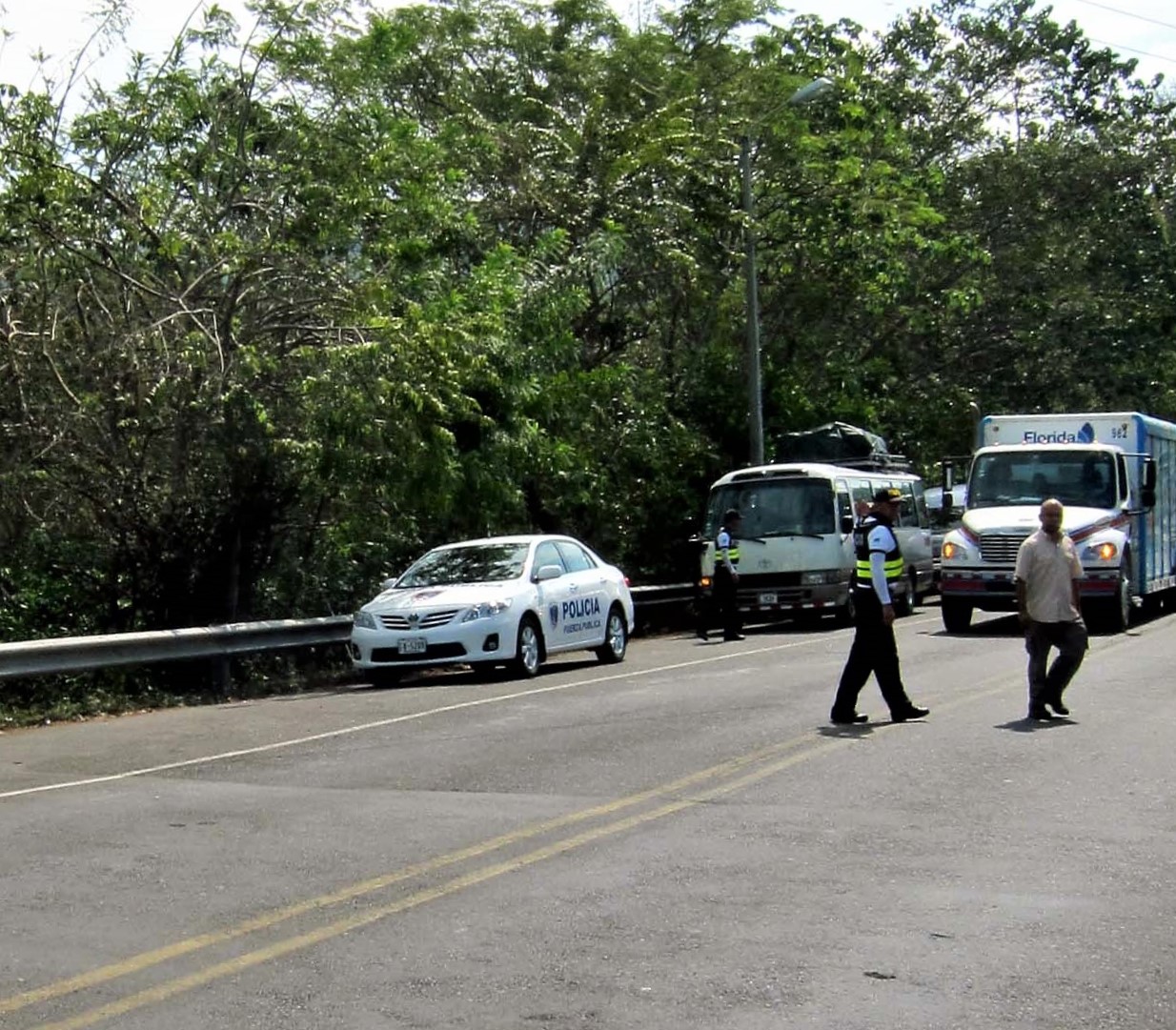
Police directing traffic and tourists
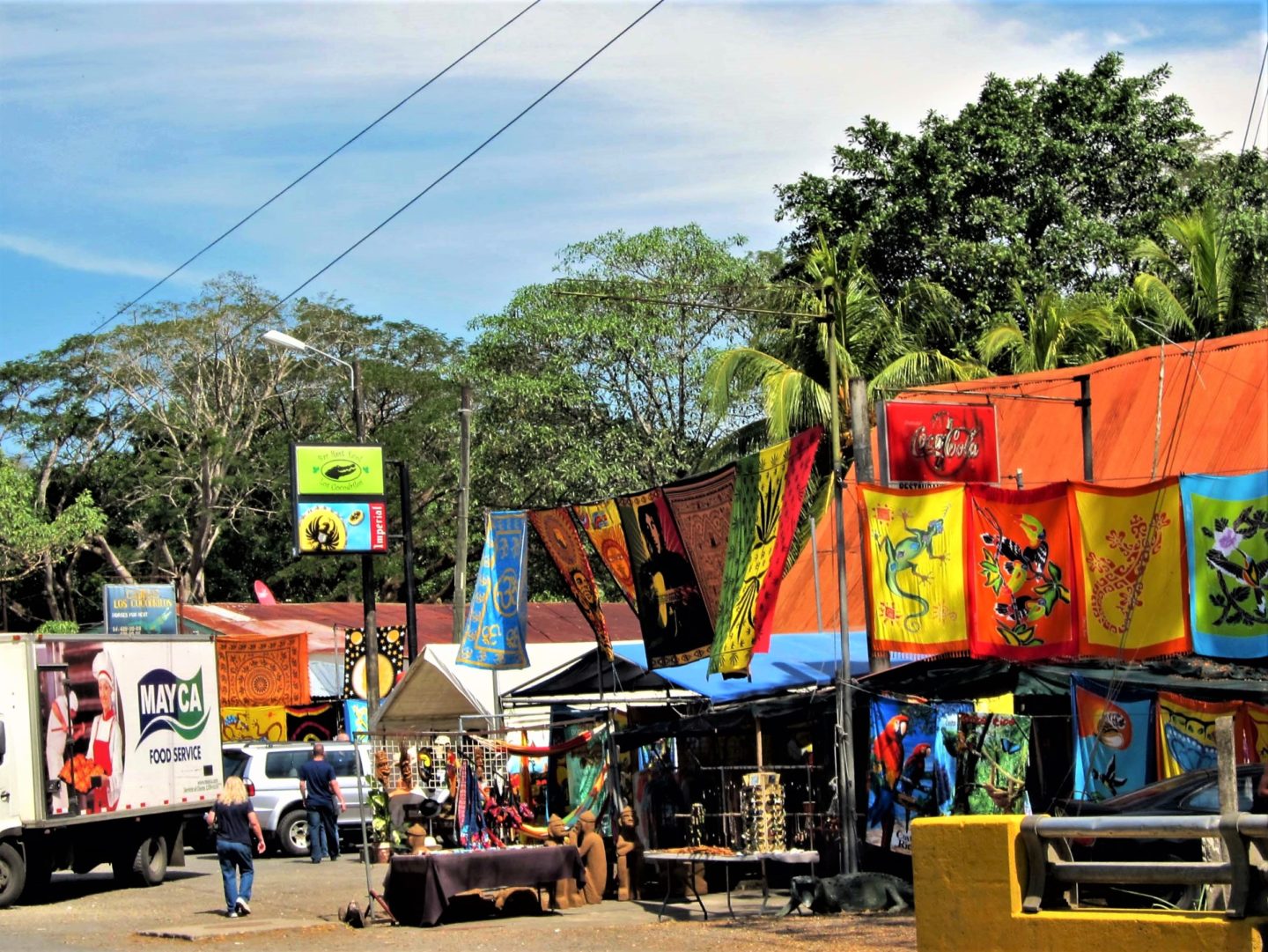
Tourist stalls, Tarcoles Crocodile Bridge
I wasn’t really sure what I was going to see but what I did see was over thirty crocs swimming in the river and lounging around on the banks. They lay amongst tyres and general rubbish reminding me of how polluted the river actually is. The feeding debate is prevalent here as well – many people throw food off the bridge however I didn’t see it whilst I was there.
The crocs are so popular that tourist stalls selling trinkets, fruit and other groceries have settled by the road on the northern side of the bridge.
Whilst this isn’t your traditional wildlife encounter, it’s definitely worth doing and best of all, it’s safe and free and only takes as long as you want it to.
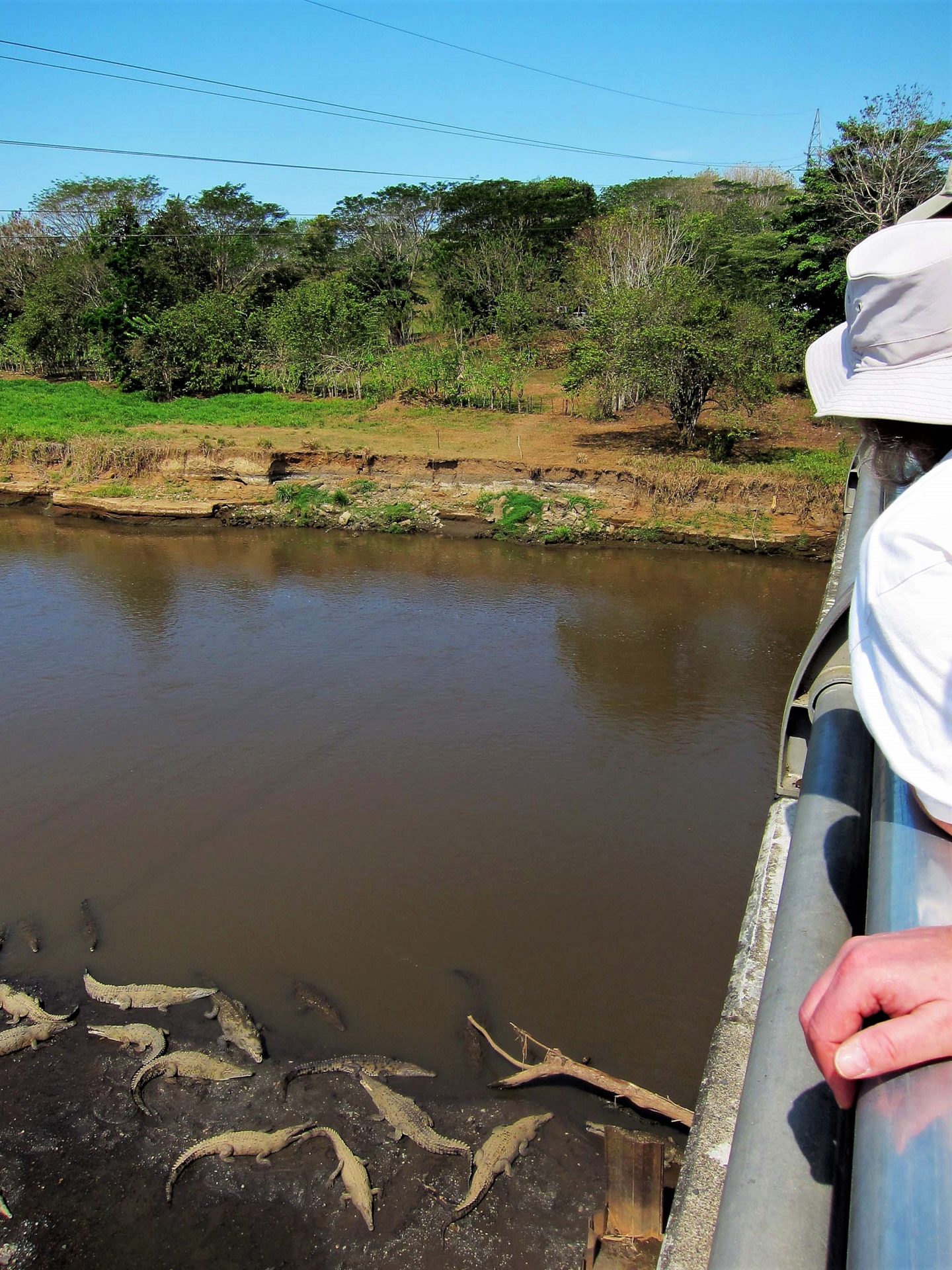
Looking over the bridge
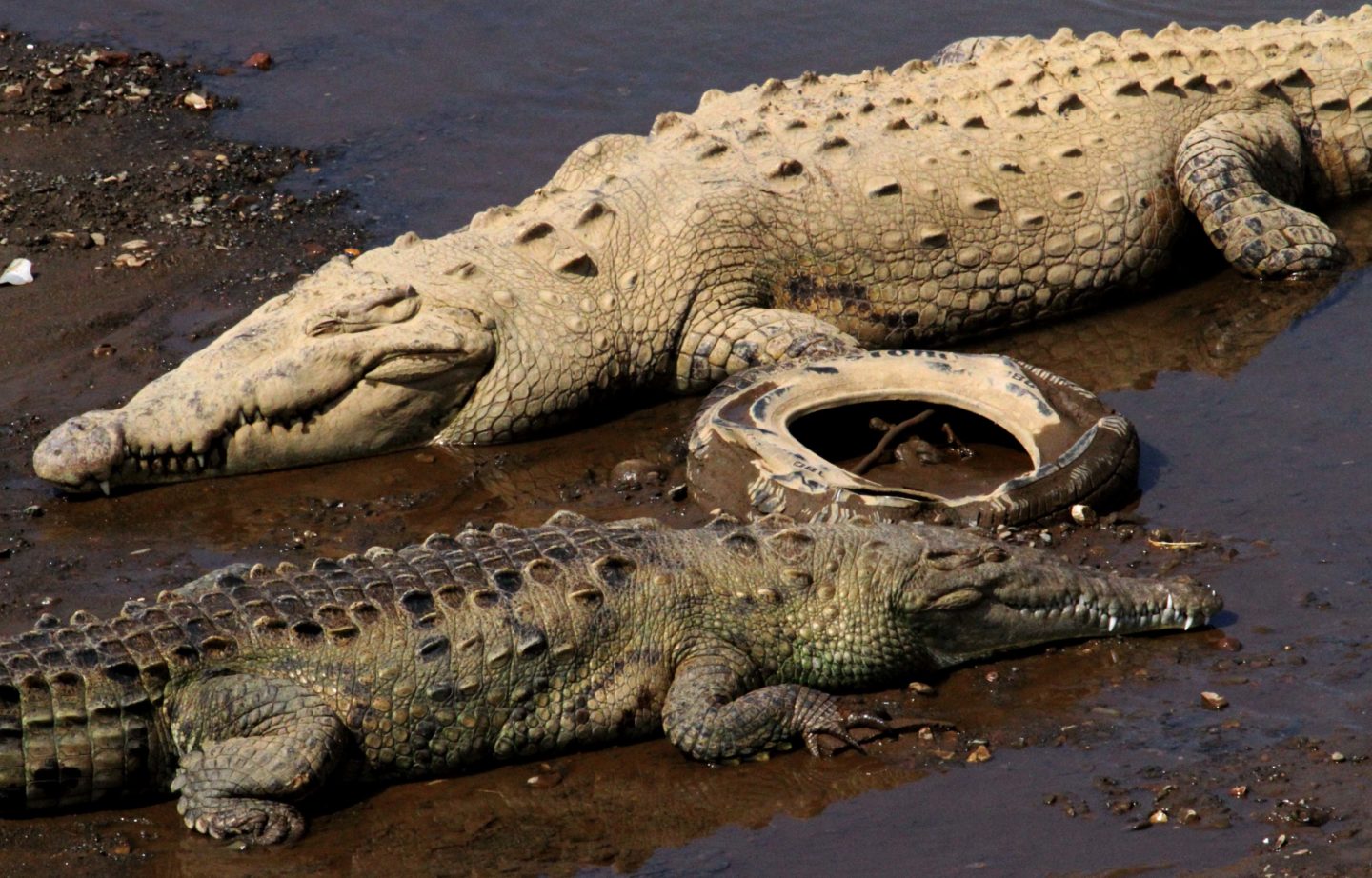
Sunbathing with a tyre
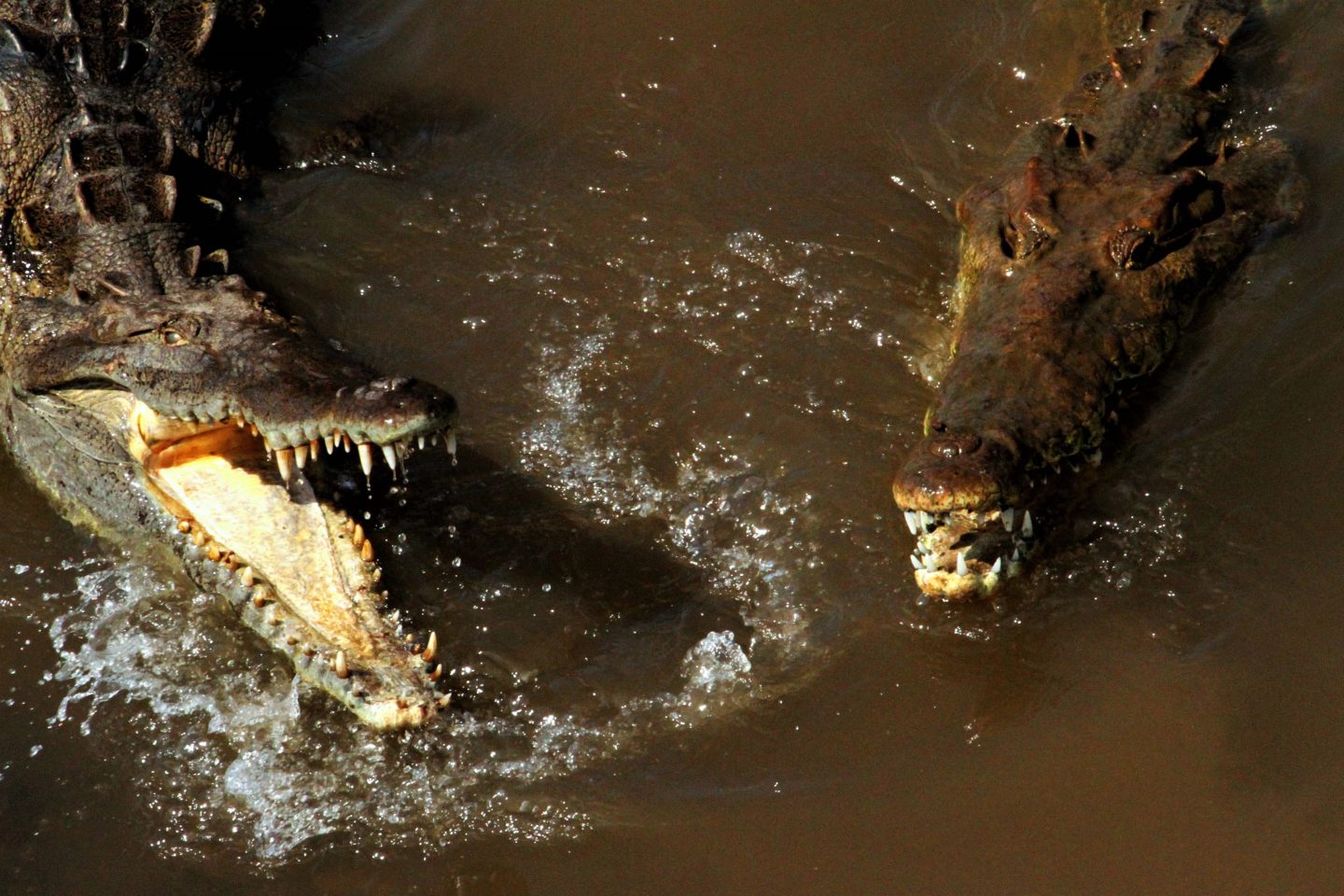
Croc snaps
As with all wildlife encounters, always be prepared by taking binoculars. The bridge affords some spectacular views of crocs but binoculars really enhance the experience. Time your trip to coincide with low tide. There is a greater chance that the crocs will be sunning themselves on the bank affording better views than if they were in the water.
Polluted rivers and views from bridges? These wildlife encounters aren’t exactly traditional and certainly not what I expected in Costa Rica however both experiences will stay etched in my memory forever. It just shows that wildlife can be enjoyed from all angles…..just as wildlife views us!
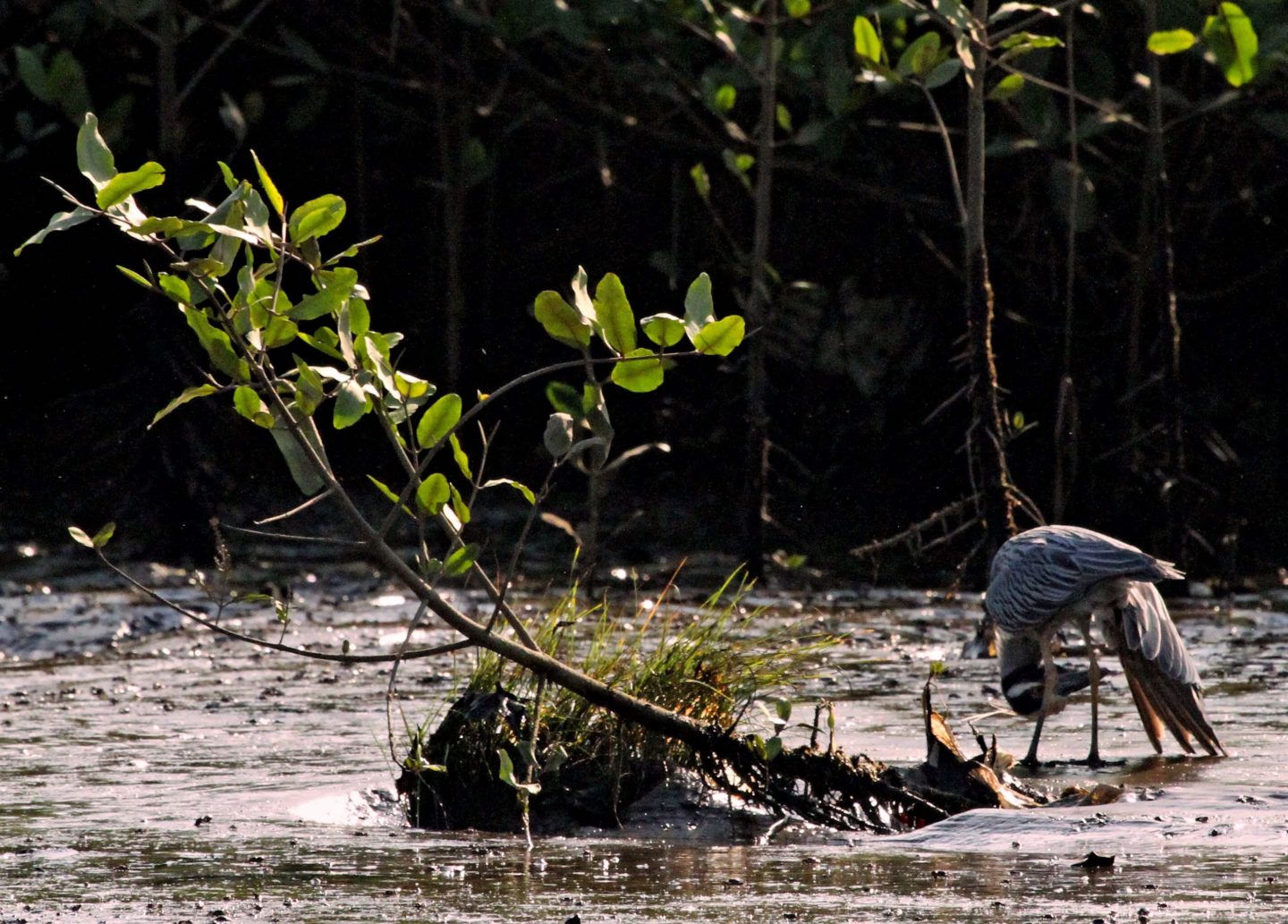
Fact File
I travelled with UK based wildlife travel company Naturetrek
For this part of the trip I stayed at the Hotel Villa Lapas, about a ten minute drive away from both the crocodile tours and the Tarcoles Crocodile Bridge.
Crocodile Tours go out of Puerte Peje, Tarcoles. Frustratingly, the name doesn’t appear on all maps but the phrase ‘Crocodile Tours’ seems to have replaced it. It’s easy to find as it’s situated on the final elbow of the Tarcoles before it enters the Pacific Ocean.
Many tours have offices in Tarcoles and offer transport out to the Rio Tarcoles as part of a crocodile tour package. Hotels have flyers advertising the different tours. Check which option and pricing suits you best. Alternatively, both experiences can be done independently very easily. Just book in advance with your chosen tour and map your journey to include Route 34 over the Rio Tarcoles.
I’d love to hear about your experiences of crocs around the world. Any questions about this post? Any stories of encounters with crocs? Let me know in the comments below.
